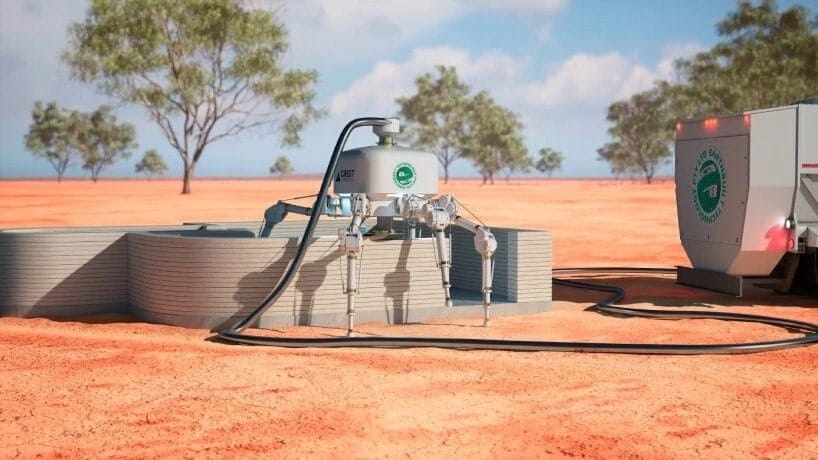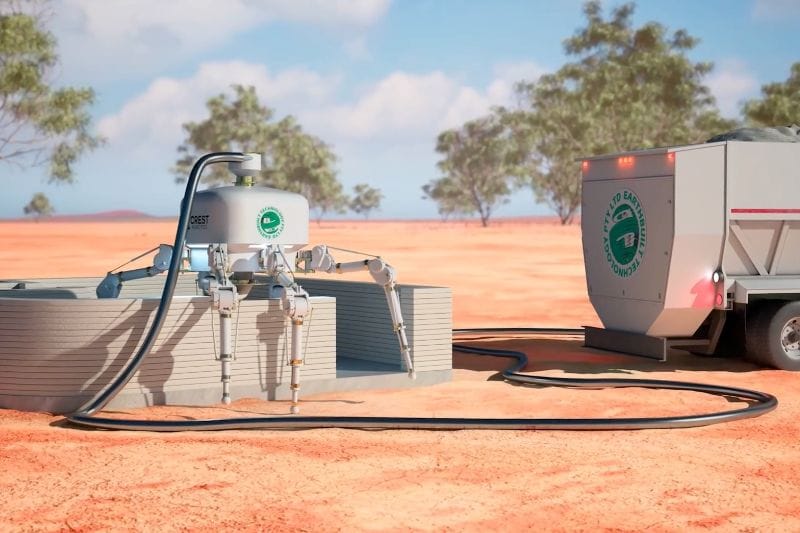Charlotte the Spider Robot: The Machine That Can Build a House in 24 Hours

The future of construction is arriving in a very unexpected form. Meet Charlotte, a spider shaped construction robot being developed in Sydney that promises to 3D print a full sized home in roughly a day. It is fast, autonomous, and built for rough terrain. It also uses almost no traditional building materials.
If the concept works at scale, Charlotte could reshape how we build homes on Earth and possibly even beyond it.
A Robot That Builds With the Ground Beneath It
Today, building a house requires long supply chains, trucks, cement mixers, pallets of bricks, and huge labor crews. Charlotte flips that model by printing structures with materials already on site.
Instead of cement, Charlotte harvests sand, soil, and clean waste from the environment. The system binds these components inside textiles and compacts them into layers that stack up into structural walls.
This approach removes many carbon heavy steps from the early stages of construction. No brick kilns, no concrete batching plants, and far fewer vehicles on the road. Developers say the robot can operate at the speed of over one hundred bricklayers while using a fraction of the resources.
Clyde Webster, founder of Crest Robotics, leads the project. His focus is simple. Build agile robots that take on the tasks humans find backbreaking, repetitive, or dangerous.

Legs Instead of Wheels
Charlotte does not roll. It walks. The prototype uses multiple legs for stability which gives it a major advantage on uneven worksites.
Wheeled robots often get stuck in sand, mud, or debris. Charlotte can step over it. The frame folds down for transport which means it can reach remote sites that large equipment cannot access.
In a world facing a global housing crunch, speed and flexibility matter just as much as cost.
Cutting the Carbon Out of Construction
Buildings account for nearly forty percent of global energy and process related carbon emissions. A large part of that comes from producing and transporting materials long before a building ever consumes a single watt of electricity.
Research teams behind Charlotte believe that replacing cement with earth based mixtures will significantly reduce embodied carbon. If the mechanical properties and long term durability prove solid under testing, the impact on future construction standards could be huge.
Turning local soil and clean waste into load bearing walls would also create a path for sustainable, low cost housing in areas that currently struggle with affordability or supply shortages.
What This Means for Workers
Robots in construction always raise the question of jobs. In regions facing labor shortages, automation can fill critical gaps. In places where construction work supports millions of people, the transition could be more difficult.
Analysts see two possible futures. One where robots replace large portions of manual labor. Another where robots support skilled crews by handling the most repetitive or hazardous tasks.
The balanced path is becoming the preferred vision. Humans make decisions and handle complex tasks. Robots carry the load, reduce injuries, and keep projects moving at high speed.
Can These Homes Pass Code?
Even the most impressive robot still has to meet building codes. That means fire testing, load bearing analysis, water resistance, flood resilience, and a long list of safety benchmarks.
Material consistency is the toughest challenge. Soil changes from site to site. To compensate, Charlotte uses digital recipes that adjust the mixture in real time. Those claims will need to be validated through independent testing before regulators sign off on large scale use.
Expect early deployments to focus on low rise structures where standards are easier to satisfy.
From Earth to the Moon
The most surprising twist is that Charlotte might not be confined to Earth. Researchers at AI SpaceFactory and NASA are exploring similar methods for building habitats on the Moon. Lunar regolith, a dusty layer that covers the Moon’s surface, can be shaped into protective shells that shield future astronauts from radiation and micrometeoroids.
Tests show that regolith based geopolymers can reach structural strengths suitable for shelters and storage areas. A lightweight robot that folds up, walks over rugged terrain, and prints in place could play a major role in early lunar construction.
A future where robots build houses on Earth by day and print habitats on the lunar south pole by night is not as far fetched as it sounds.
The Future of Autonomous Building
Charlotte represents a shift in how we think about construction. Not as a fixed process driven by heavy machinery, but as a flexible system powered by robotics, local materials, and digital designs.
If successful, this type of autonomous building could:
- Cut housing construction time from months to a single day
- Reduce carbon emissions by replacing cement with earth based mixes
- Lower costs in regions where materials or labor are scarce
- Improve safety by removing workers from hazardous areas
- Expand construction possibilities to remote or damaged environments
Robots like Charlotte point toward a world where building a home is as simple as scanning a digital plan and letting the machine get to work.
The next era of construction is not arriving with louder engines. It is arriving with quiet steps, compact frames, and the ability to build nearly anywhere.



Comments ()